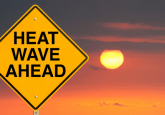CO2-consuming bacteria could save the planet

Researchers have engineered a strain of CO2-consuming bacteria that can generate all its biomass from atmospheric CO2, rather than sugar. These bacteria could pave the way to novel, carbon-efficient technologies.
Despite the international increased awareness of the impact of greenhouse gases and climate change, greenhouse gas emissions continue to rise. As such, there is increased interest in developing novel methods to tackle the issue.
Now, after nearly a decade’s worth of study design, genetic engineering and lab-based evolution, Ron Milo and his team of researchers from the Weizmann Institute of Science (Rehovot, Israel) may have found a solution – genetically engineered CO2-consuming bacteria.
In a groundbreaking study, published recently in Cell, the researchers described their success in engineering Escherichia coli that produce all their biomass from atmospheric CO2, negating their need for sugar.
Initially, the team identified the crucial genes required for carbon fixation (the process of converting carbon from atmospheric CO2 into biological molecules). They then added these to E. coli, and removed the genes needed for sugar metabolism.
Additionally, the researchers inserted a gene that allowed the bacteria to obtain energy from a readily available organic molecule called formate, which can be produced directly from electricity and air.
The bacteria were then slowly weaned off sugar. At each stage, they were given minute quantities of sugar, just enough to prevent starvation, along with CO2, at concentrations about 250 times greater than the earth’s atmosphere, and formate.
- Satellites are key to monitoring global carbon dioxide levels
- Mapping the course of climate change
- New photorespiratory pathways: the key to humanity’s survival?
Some of the bacteria developed a taste for CO2, giving them an evolutionary advantage and ensuring this characteristic was passed onto descendants. After about 200 days, the bacteria had experienced a complete trophic mode change, meaning that some of the bacteria could now use CO2 as their only carbon source.
This was validated by feeding some E. coli CO2 containing a heavy isotope (C13) and checking their weight gain, which confirmed that all carbon atoms in the body were extracted directly from CO2 alone.
Currently, the bacteria still emit more CO2 during growth than they consume; however, the scientists intend to conduct further research in order to investigate whether the process could become carbon negative.
Milo and his team believe that their research could help to revolutionize sustainable bioproduction. E. coli is already used to produce commodity chemicals, such as insulin, and these CO2 consuming bacteria could convert these processes to carbon neutral ones.
“Our lab was the first to pursue the idea of changing the diet of a normal heterotroph (one that eats organic substances) to convert it to autotrophism (‘living on air’),” Milo explained. “It sounded impossible at first, but it has taught us numerous lessons along the way and, in the end, we showed it indeed can be done. Our findings are a significant milestone toward our goal of efficient, green scientific applications.”





